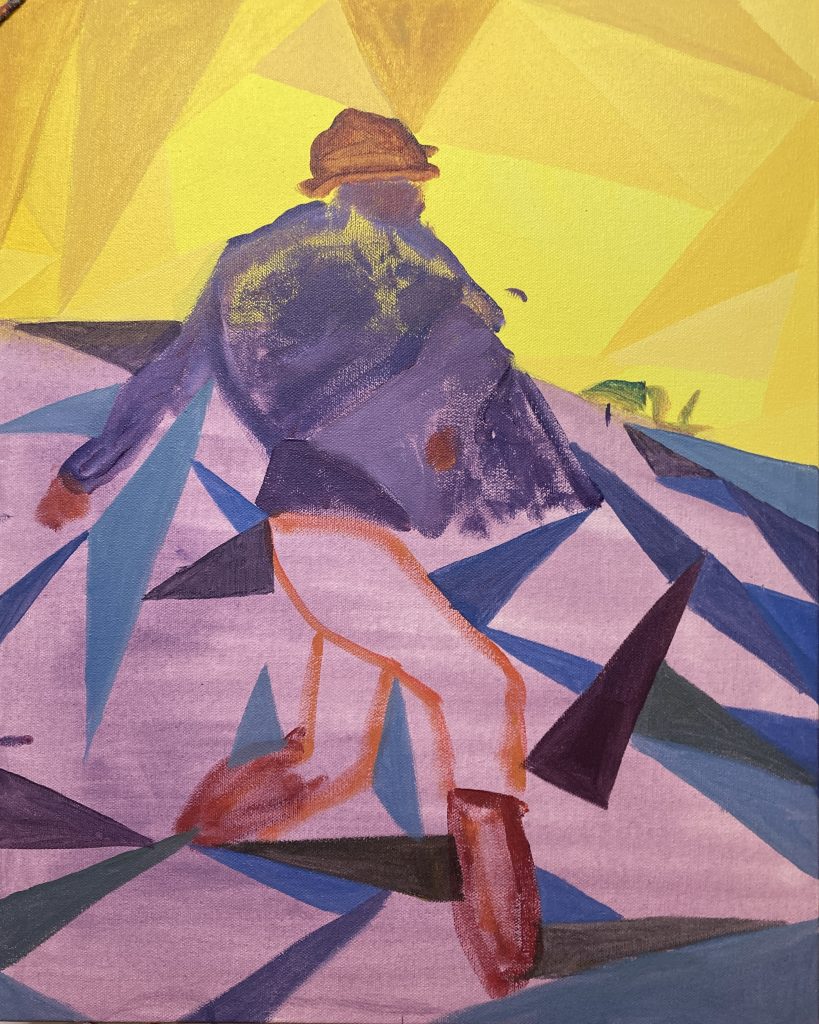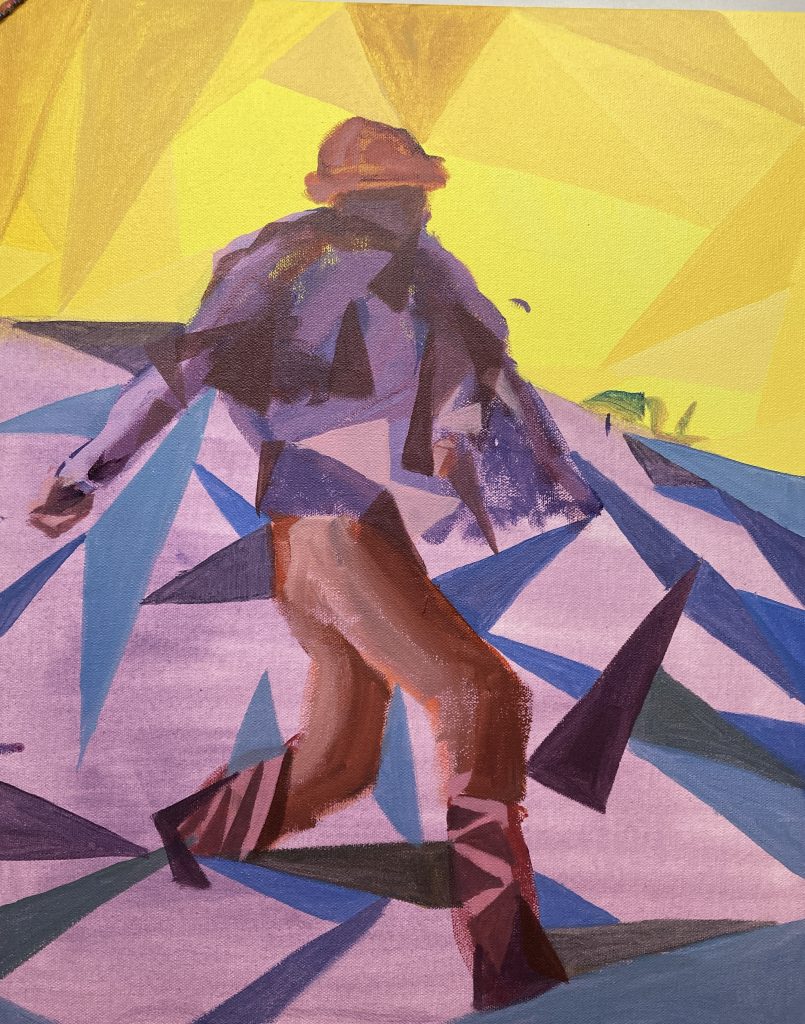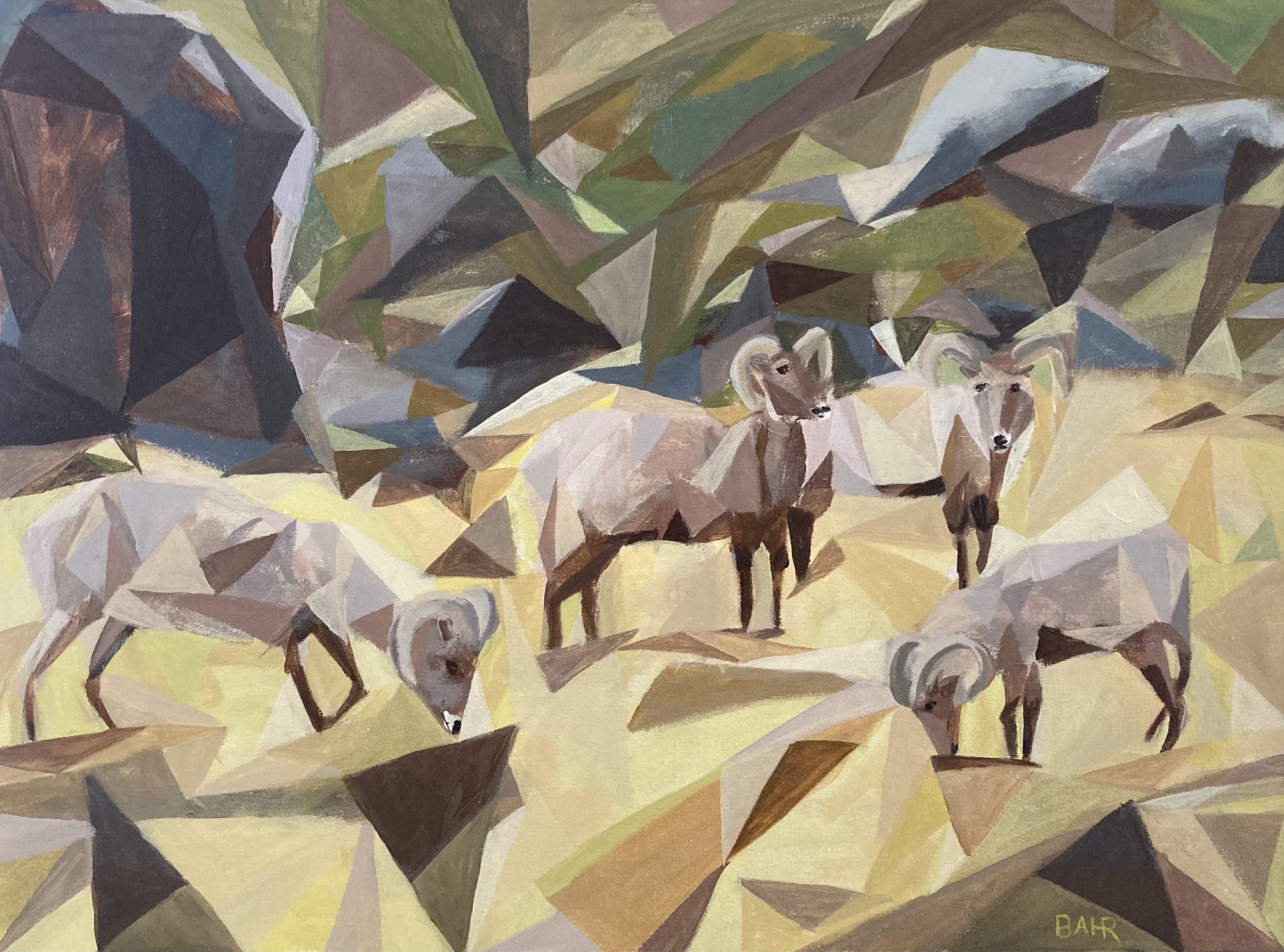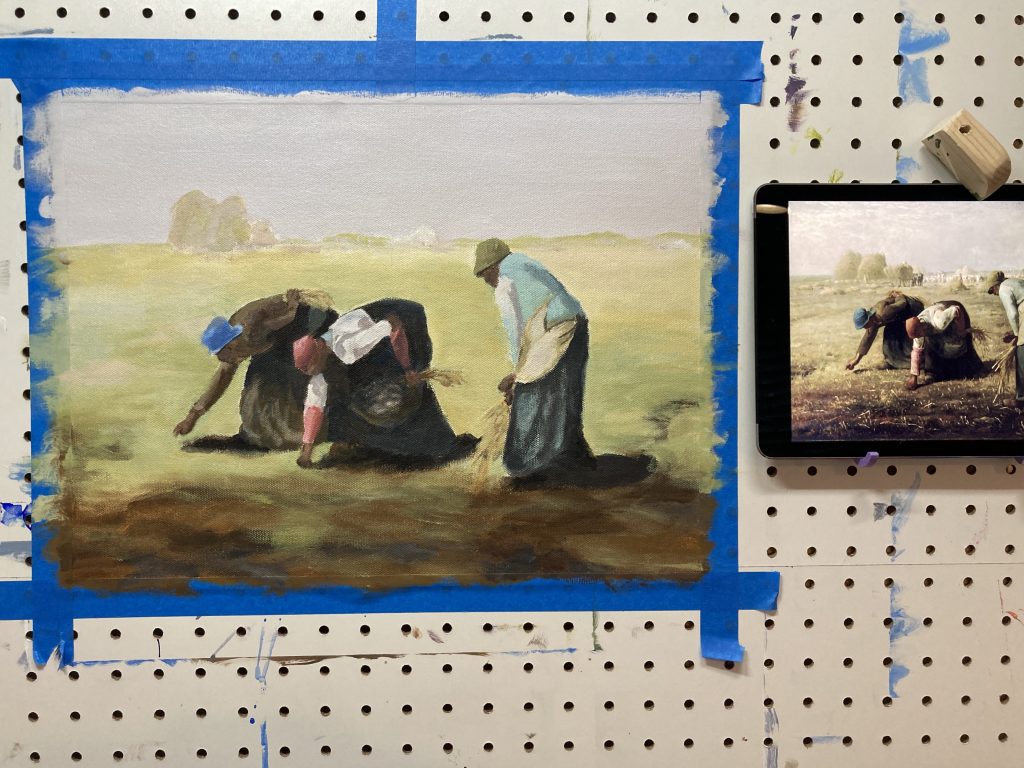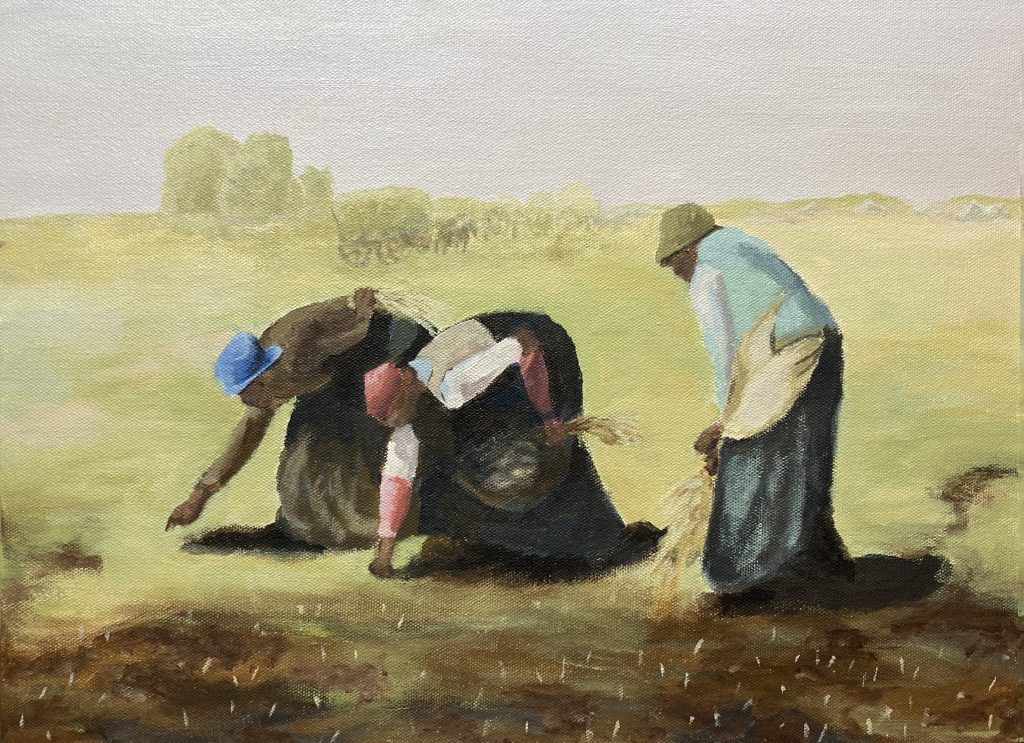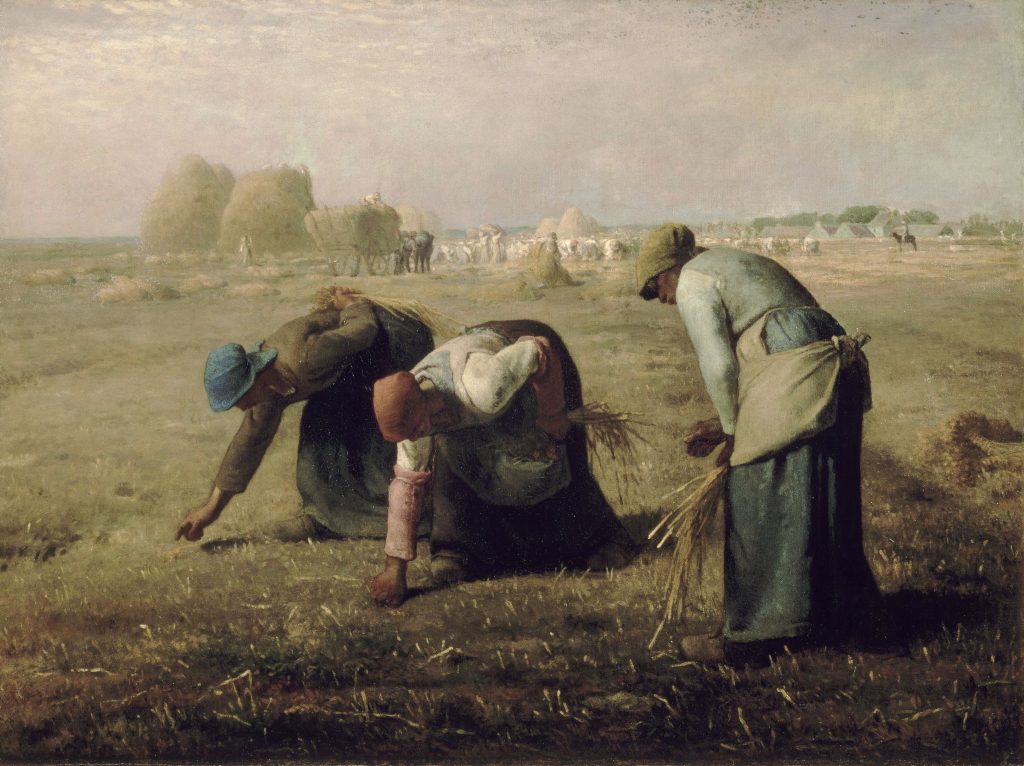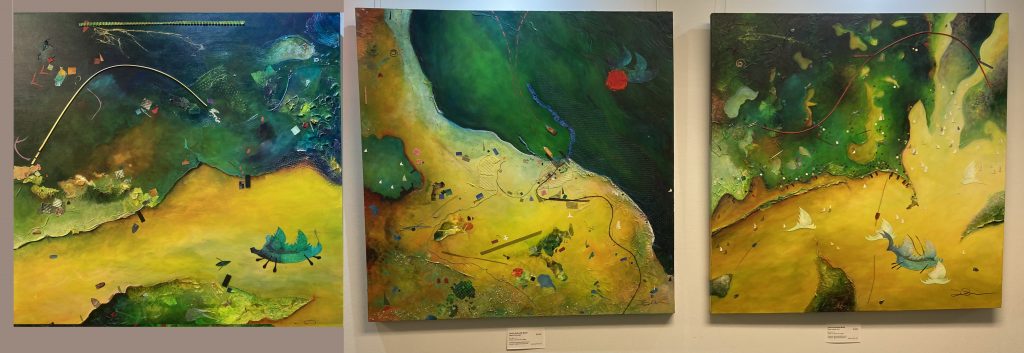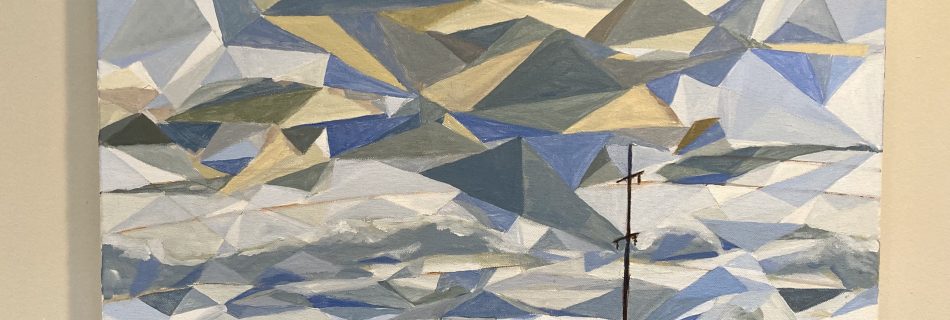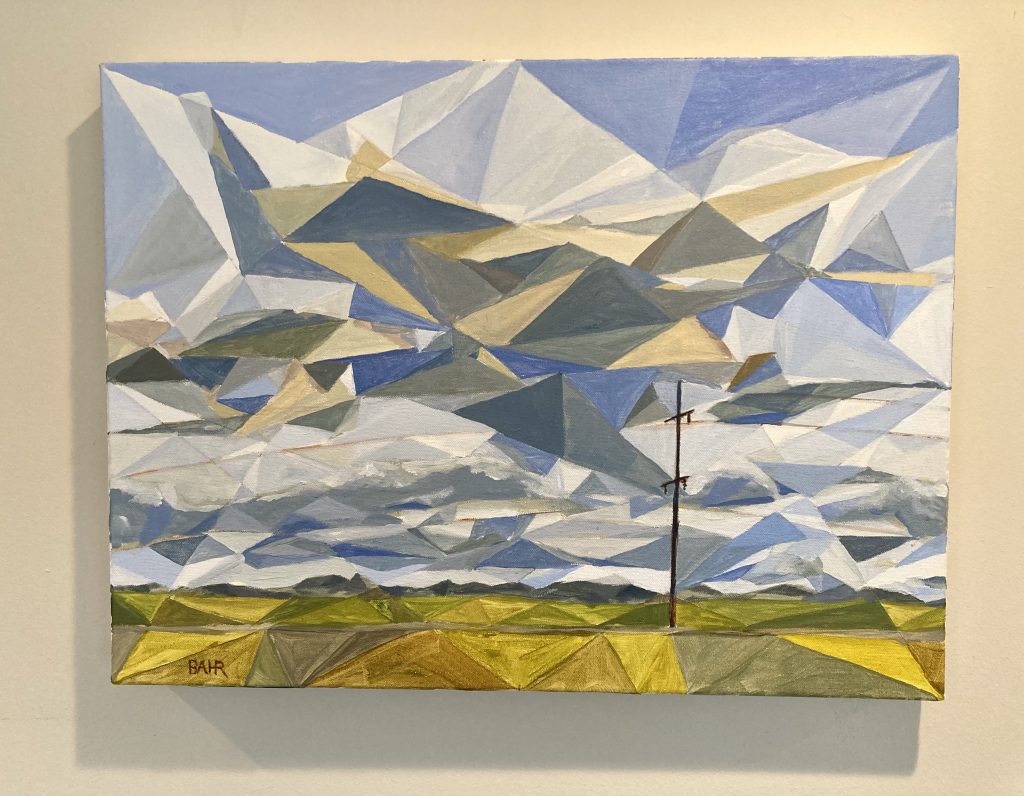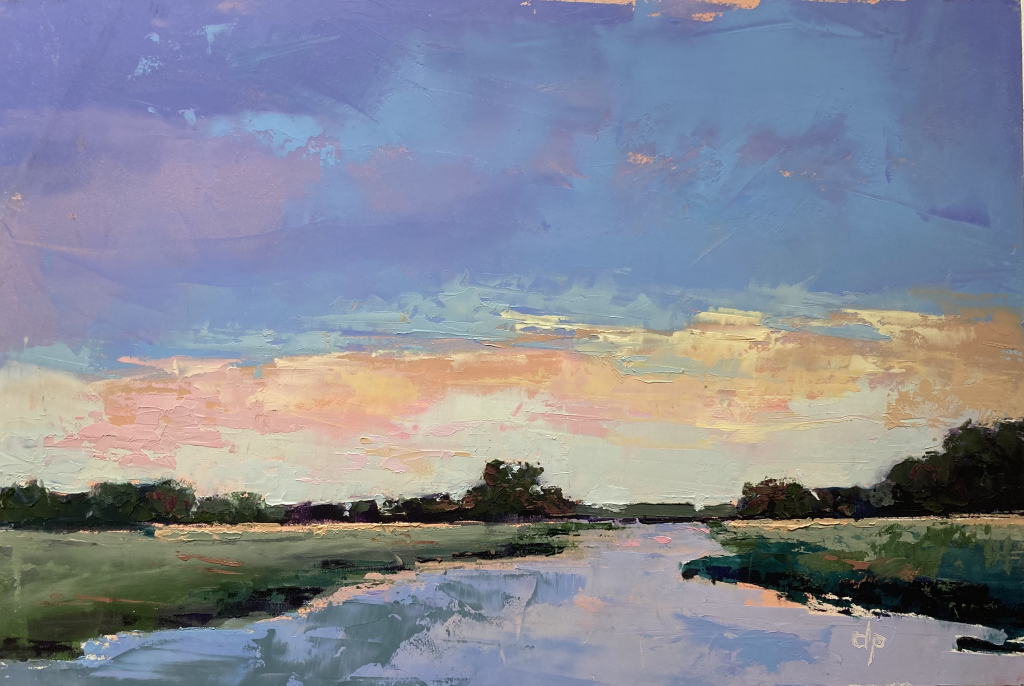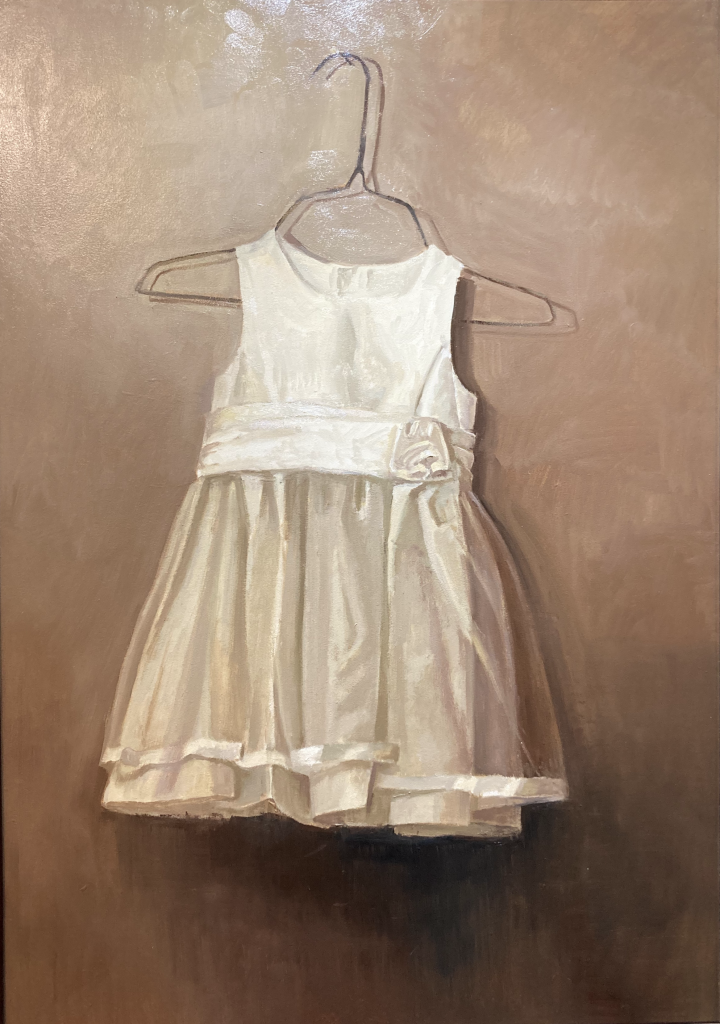
A friend and amazing painter from the Texas Hill Country asked how this painting came about, and I was startled to find that I didn’t know! I didn’t document the process very much at all, which is atypical — I photograph a work in progress regularly during the process in order to see it small, send to a laptop for notation, turn upside down, you name it.
But, on pieces like this, the triangles just take hold and I follow them.
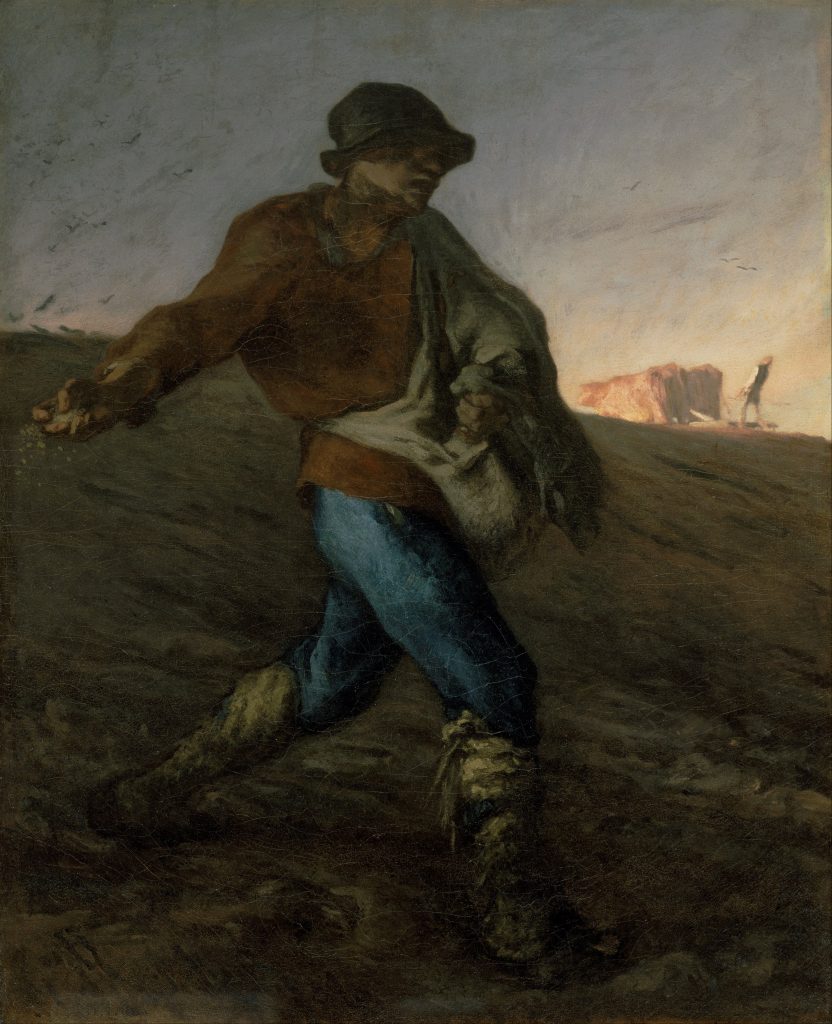
So my apologies, Nancy, because I don’t know how illuminating this will be. I believe I sketched the sower figure several times, just pencil and paper, looking at both Millet’s painting and Van Gogh’s take on Millet’s painting. I wonder if the sower’s dramatic gesture is what lodged it in Van Gogh’s mind.
I decided to paint this in colors complementary to Millet’s colors, just for fun. I didn’t adhere closely to this because the painting has its own strong ideas.
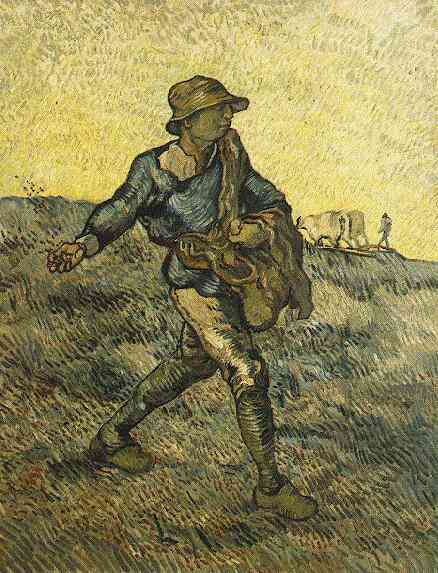
Placement and size of the triangles has to do with following a form, or showing gradation in the sky or ground, and how to lead the eye around the canvas.
This painting is for sale, but I’m so attached to it!
